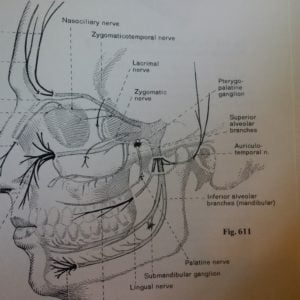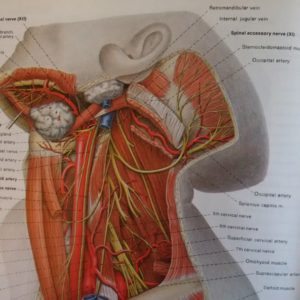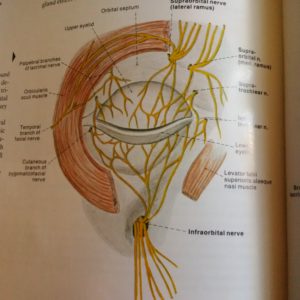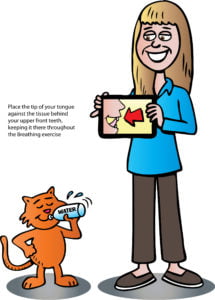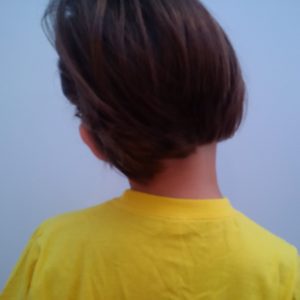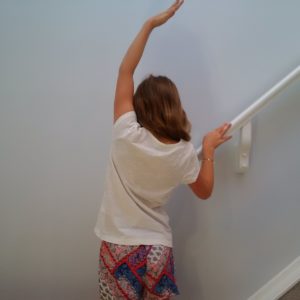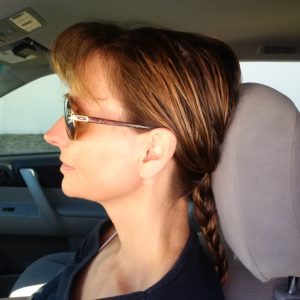Pain in the Neck
The sun is relentless, and sweat is slipping down a focused forehead; fatigue is in control: it’s the 17th hole. Only one more to play. Golf can be a pain in the neck. Shoulders and mid-back are burning, headache is lurking, forearms ache from 16 holes of grappling with a three-wood and a putter. Fatigue leads directly to the poor posture that affects the entire body. Neck pain starts and headache sets in.
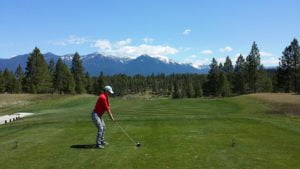
Repetitive motion over time can create strain or lines of tension in the muscles being overworked. What began as a purely relaxing afternoon of golf… Well… By the time you trudged in from the last of those 18 holes, your day had also included muscle use that could result in neck pain from a tight upper back or from the thoracic region. And… If this afternoon’s golf outing wasn’t especially successful and relaxing, a clenched jaw may have contributed to neck tightness and could have irritated your trigeminal nerve.
Forcing a shot, digging out of the sand, working through pain or tightness, and over-swinging can all cause undue force on your neck, thereby irritating the fascia, along with several nerves–including the accessory nerve. When you smack the ground with a treacherous club, you can generate a serious force up through your arms and into your neck, enough to result even in a true headache.
3 Essential Nerves that Affect Performance
- The trigeminal nerve is the fifth-largest cranial nerve and is the only one that connects with the dermatomes of the head. It provides sensations of facial touch, pain, and temperature. The trigeminal nerve innervates your eye, your jaw, your teeth, the top of your head, and your ear. Irritation of this nerve can affect vision and/or hearing, and can induce jaw pain and headaches. Irritating a nerve can often create a ripple effect: contraction of muscles in the neck and head. Migraines often are triggered by irritation of the trigeminal nerve—an irritation that can be caused by clenching or by continual muscle spasm in the temporalis muscle or the fascia over your skull. Check yourself: Do you clench when playing golf or any sport?
%27%20fill-opacity%3D%27.5%27%3E%3Cellipse%20fill%3D%22%234a412c%22%20fill-opacity%3D%22.5%22%20rx%3D%221%22%20ry%3D%221%22%20transform%3D%22rotate(-97.9%20239.6%2022.9)%20scale(65.30254%20239.34402)%22%2F%3E%3Cellipse%20fill%3D%22%23bdbfc2%22%20fill-opacity%3D%22.5%22%20rx%3D%221%22%20ry%3D%221%22%20transform%3D%22rotate(-7.3%20302.2%20-1073.5)%20scale(180.60058%2066.13693)%22%2F%3E%3Cellipse%20fill%3D%22%237c4c00%22%20fill-opacity%3D%22.5%22%20rx%3D%221%22%20ry%3D%221%22%20transform%3D%22matrix(14.13457%20-80.1611%2038.7072%206.82512%20282.2%20281)%22%2F%3E%3Cellipse%20fill%3D%22%23868a92%22%20fill-opacity%3D%22.5%22%20rx%3D%221%22%20ry%3D%221%22%20transform%3D%22matrix(-47.70107%209.61468%20-4.06325%20-20.1589%20177.4%20211.2)%22%2F%3E%3C%2Fg%3E%3C%2Fsvg%3E)
Branches of Trigeminal Nerve – Thanks to Carmine D Clemente
- The accessory nerves have both a spinal (C1 – C5) component and a cranial component. The spinal part supplies both the trapezius muscles and the sternocleidomastoid muscle (SCM) . When one side of the SCM contracts, this muscle rotates the head; when both sides of the SCM contract, this muscle brings your chin to your chest. Injury or overuse of the SCM can cause contraction in your shoulder, and can also cause pain in your neck, jaw, and head.
- The optical nerve emerges from the posterior surface of the eyeball to enter the cranial cavity and ends up located on the occiput. If the optical nerve is irritated, it can cause dizziness and loss of balance. If the fascia and muscles over the nerve are contracted, this can create migraine-like pain: pain behind your eyes and myofascial pain just below the occiput.
What do to before Neck pain strikes
- Stay hydrated by drinking plenty of water, and include electrolyte packs in order to prevent cramping. No sugary drinks or chemical drinks! If you are drinking alcohol, make sure you drink a least a liter of water before you play and at least a liter while you play.
%27%20fill-opacity%3D%27.5%27%3E%3Cellipse%20fill%3D%22%23486977%22%20fill-opacity%3D%22.5%22%20rx%3D%221%22%20ry%3D%221%22%20transform%3D%22rotate(-178.3%2079.2%2098.6)%20scale(29.61139%20208.96615)%22%2F%3E%3Cellipse%20fill%3D%22%23fff%22%20fill-opacity%3D%22.5%22%20rx%3D%221%22%20ry%3D%221%22%20transform%3D%22matrix(68.68442%2016.22282%20-35.23118%20149.16226%2052.1%2050.4)%22%2F%3E%3Cellipse%20fill%3D%22%23cc7237%22%20fill-opacity%3D%22.5%22%20rx%3D%221%22%20ry%3D%221%22%20transform%3D%22matrix(-5.49847%2059.00792%20-29.29133%20-2.72942%2040%20246.6)%22%2F%3E%3Cellipse%20fill%3D%22%23fff%22%20fill-opacity%3D%22.5%22%20rx%3D%221%22%20ry%3D%221%22%20transform%3D%22matrix(23.20049%2053.41431%20-75.58409%2032.82992%2035%2043.2)%22%2F%3E%3C%2Fg%3E%3C%2Fsvg%3E)
Place tongue on the roof of your mouth, helps keep the jaw relaxed. Drink water!
4 Proven SFT Strategies to Prevent Neck Pain
- Remember to breathe and to open and close your jaw during a round of golf. Awareness of jaw-clenching wins you half the battle. Place your tongue on the roof of your mouth or on the inside of your teeth; this will help open up your mouth–and if you place your tongue on the roof of your mouth, this activates the master meridian lines in the body and improves performance and energy flow–a technique used in martial arts.
- Always warm up: Stretch your neck, ear to shoulder on both sides, chin to chest, using gentle rotations, shrugging your shoulders.
- Side Stretches: Stretch the side fascia that attach to hip and shoulder.
- Strengthen your neck muscles to prevent Neck Pain: You can do this easily and effectively while driving: Place your head against the car’s headrest and hold it there for five seconds. Repeat this for the duration of the car ride. Most people today have a difficult time even reaching the headrest, as their heads are inclined so far forward, due to computer work and use of smart phones.
Simone Fortier is an internationally renowned Author, Talk Show Host, Speaker, and Manual Therapist. She boasts testimonials from some of the most significant names in the world of sports, including the PGA, NFL, NHL, and Olympics. She is known in the world of sports injuries and healing. Simone was a pioneer of Stretching Fascia Therapy, as in the Simone Fortier Technique (SFT). Simone is also well-known for her business success. Consequently, she delights in empowering other small-business owners as they work to achieve their own goals.


